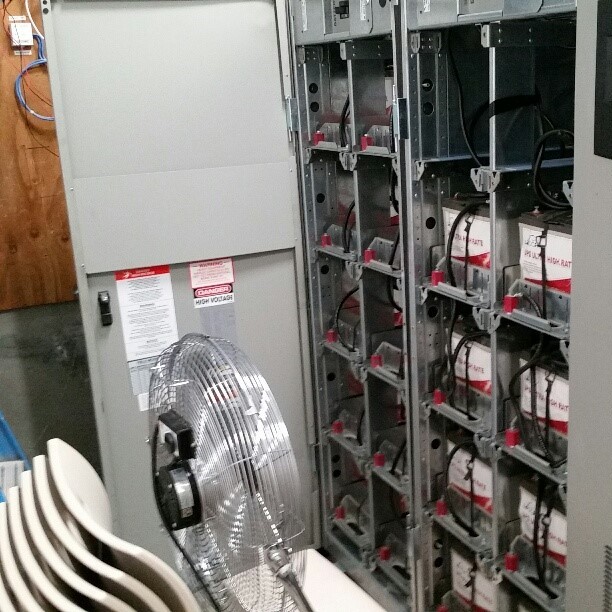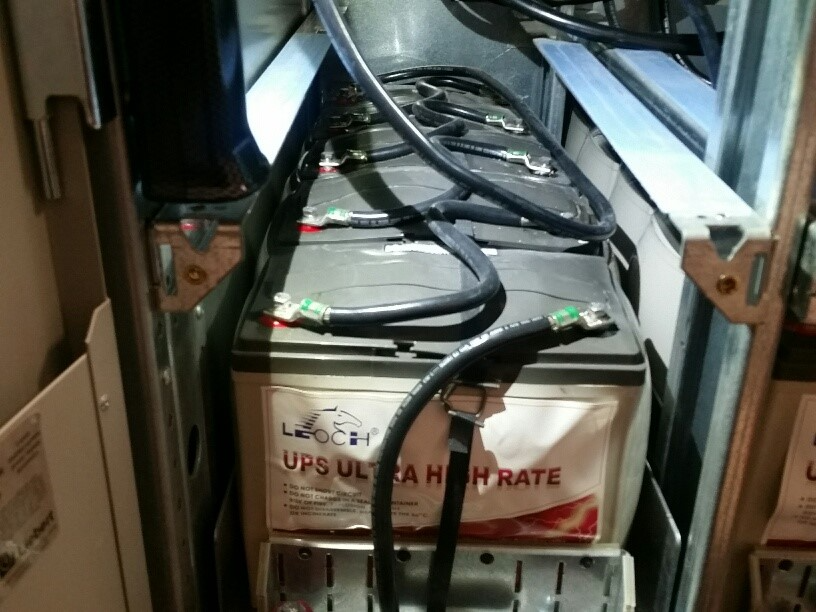

Band-Aid fixes don’t actually fix problems – we all know that, right?
Take a close look at the image above. Do you see what we see?
This customer is using a fan to regulate the temperature of the battery cabinet in this Liebert Npower 50kVA UPS. Why? Because they haven’t pulled the trigger on routine, age-based component replacements. Bad idea (in case that isn’t obvious).
And just as troubling, there is no plan in place to address the underlying cause – their age-based replacement components are well past their expiration date.
Using band-aid fixes isn’t all that uncommon, though. When is the last time you saw a car driving down the road with the passenger window covered by a trash bag, or the bumper hanging on by duct tape? Or the same car driving around on a donut tire for weeks? All very bad ideas.

Not all band-aid fixes are as obvious, but it doesn’t mean the risk isn’t there. Driving an extra 1,000 miles past your oil change due date, removing the batteries from a smoke alarm to stop the low-battery alert from beeping, or even the literal sense of putting a band-aid on an injury that truly requires medical attention are all quick fixes that can be easily overlooked.
Your UPS system is designed to do one primary thing: keep your business on if and when utility power goes down. For that to happen, routine maintenance and age-based replacements are required. When these two things are neglected for too long, not only is the performance level of the entire UPS system impacted, but it creates an unsafe and unpredictable environment for your business. When neglect reaches a point where band-aid fixes are used to mask the issue, things get scary.
We tend to see this more often with older UPS units than newer ones. It’s like driving a car that already has 100,000 miles on it and going another 10,000 without ever checking the oil. Have you ever seen an older car charred on the side of the road, and wondered, “How did that happen!?” Hint: There were likely many warning signs in advance. The driver simply didn’t act on those warning signs, ahead of time.
Don’t ignore the warning signs. Don’t put preventive maintenance and age-based recommendations on the back burner. And please, please don’t use band-aid fixes like the one we saw above.
What are the warning signs when it comes to UPS failure? (We’re focusing primarily on batteries in this example)

Image: Swollen batteries due to neglect and failure to replace in a timely manner.
As a national UPS service provider, our job is to track and inform our clients of when their age-based replacements are due, with enough lead time for our clients to plan and budget. It is the customer’s responsibility to act on those recommendations as timely as possible.

